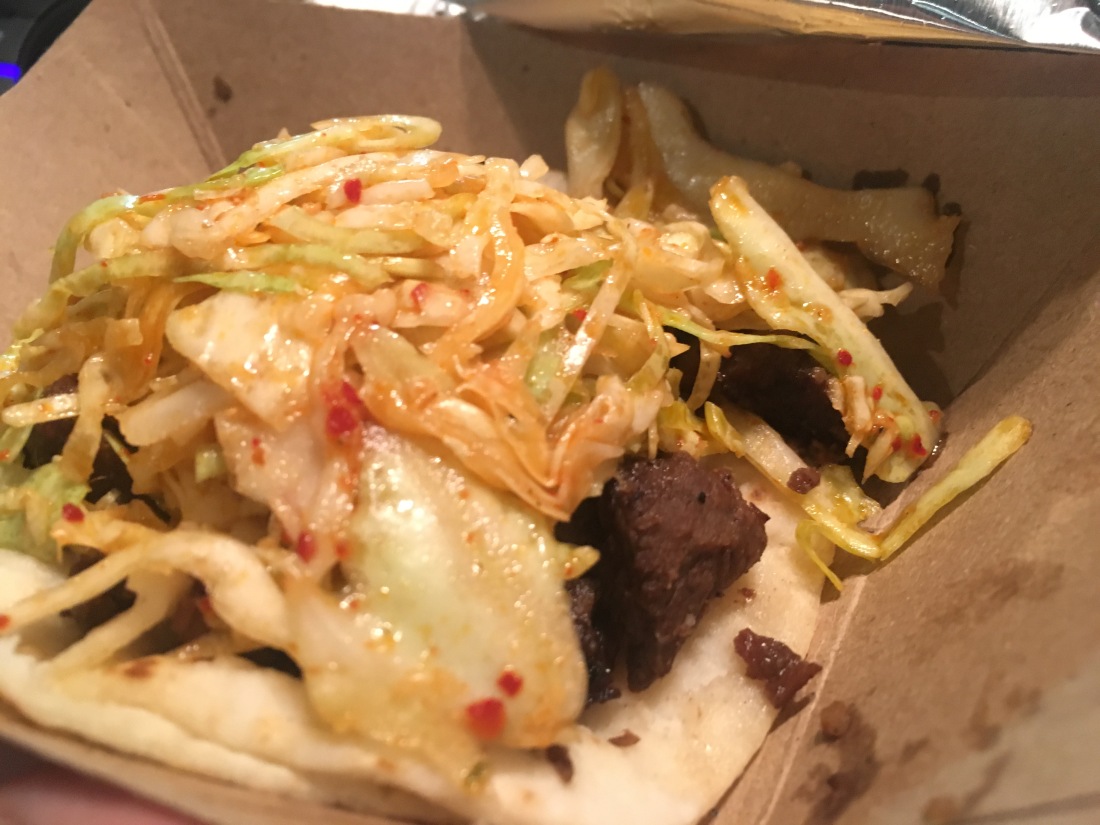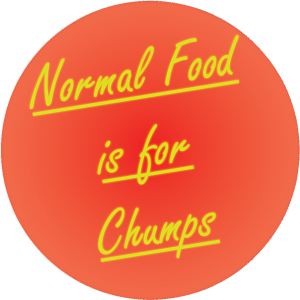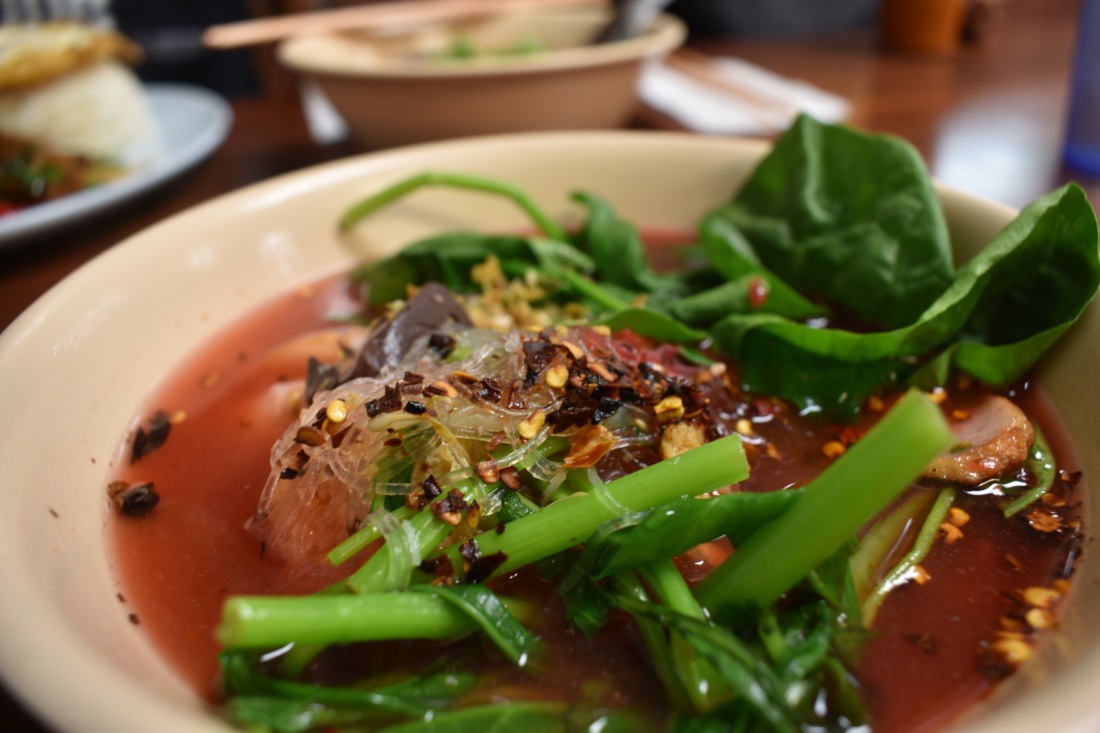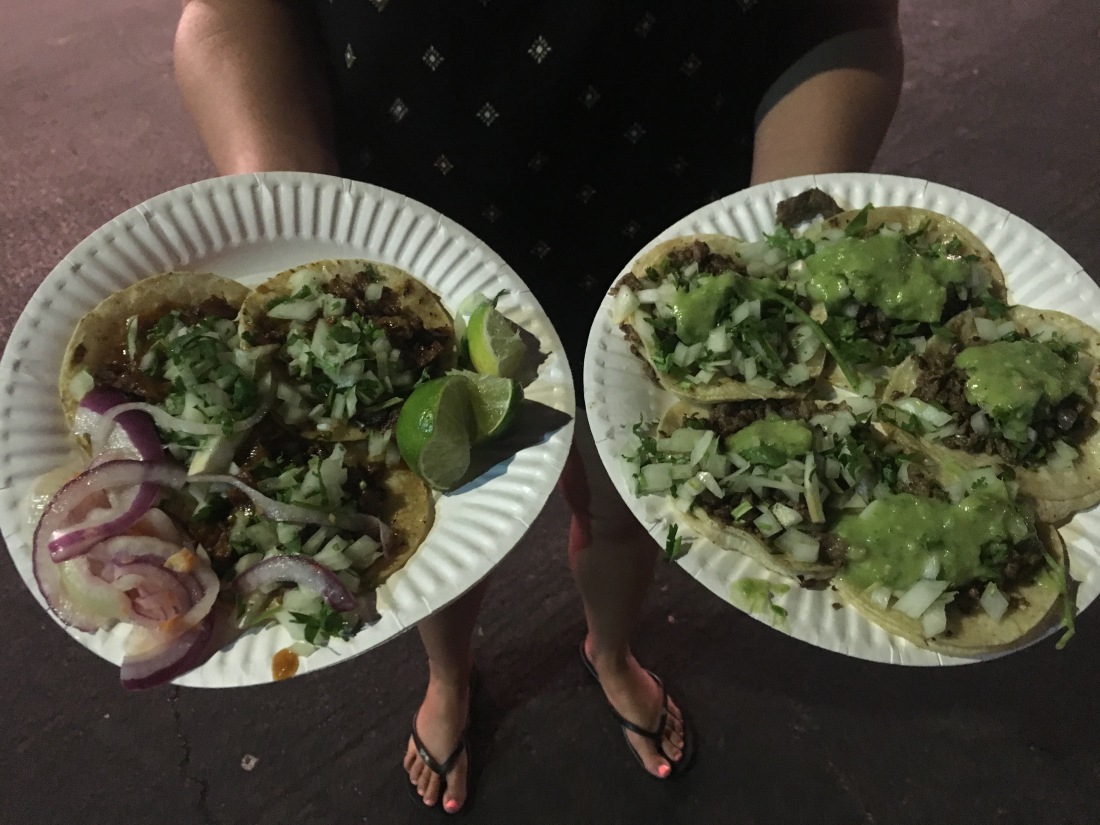The Kogi food truck is the grandfather of the LA food truck scene. Ten years after the birth of a revolution, Kogi food trucks (notice now plural) are still going strong and feeding the greater LA area.
Despite the longevity of the Kogi brand, this week was my first time eating at one of their trucks. We went to the website to track down the one nearest us and headed to Pasadena.
In order to get the most from our visit we ordered all of the following: the Kogi dog; three short rib tacos; a kimchi quesadilla; and the sliders. This cornucopia of street food ended up costing around $36 dollars, expensive but that is the way of the food truck.
I enjoyed Korean fusion aspect, although the flavor of each item tended to blend together.

In particular, I did not find anything outstanding about the kimchi quesadilla. Kimchi is a Korean specialty that is made from fermented vegetables, such as cabbage, radishes and other vegetables you might find in a slaw.

Although I ventured to try the quesadilla, I am usually not a fan of kimchi due to the strong taste from the fermentation process. I was strangely disappointed and relieved to find the taste absent from the quesadilla. Surely the kimchi quesadilla should have been more than just cheese?
Additionally, I was a little disappointed that the short rib sliders only provided two sliders for $8. They were tasty, but if you were planning on getting any of these items as a dinner replacement, it would be much better as a late night snack or light lunch.
The Kogi dog was fine. It definitely had a unique identity, combining a plain hotdog with Asian-style slaw. It was a good combination, but I am not sure I would order it again because there was one item that stood out above everything else.
The tacos.

Oh my god, the tacos.
The short rib tacos were easily the best thing we ordered and will definitely encourage me to come back despite the rest of the shortcomings.
The Kogi food truck was definitely a fun trip to make, and I would encourage those reading who haven’t tried it to give it a shot. Obviously my feelings towards it weren’t fantastic, but it is a piece of LA history and culture, which definitely helps to make the trip worth it.
























